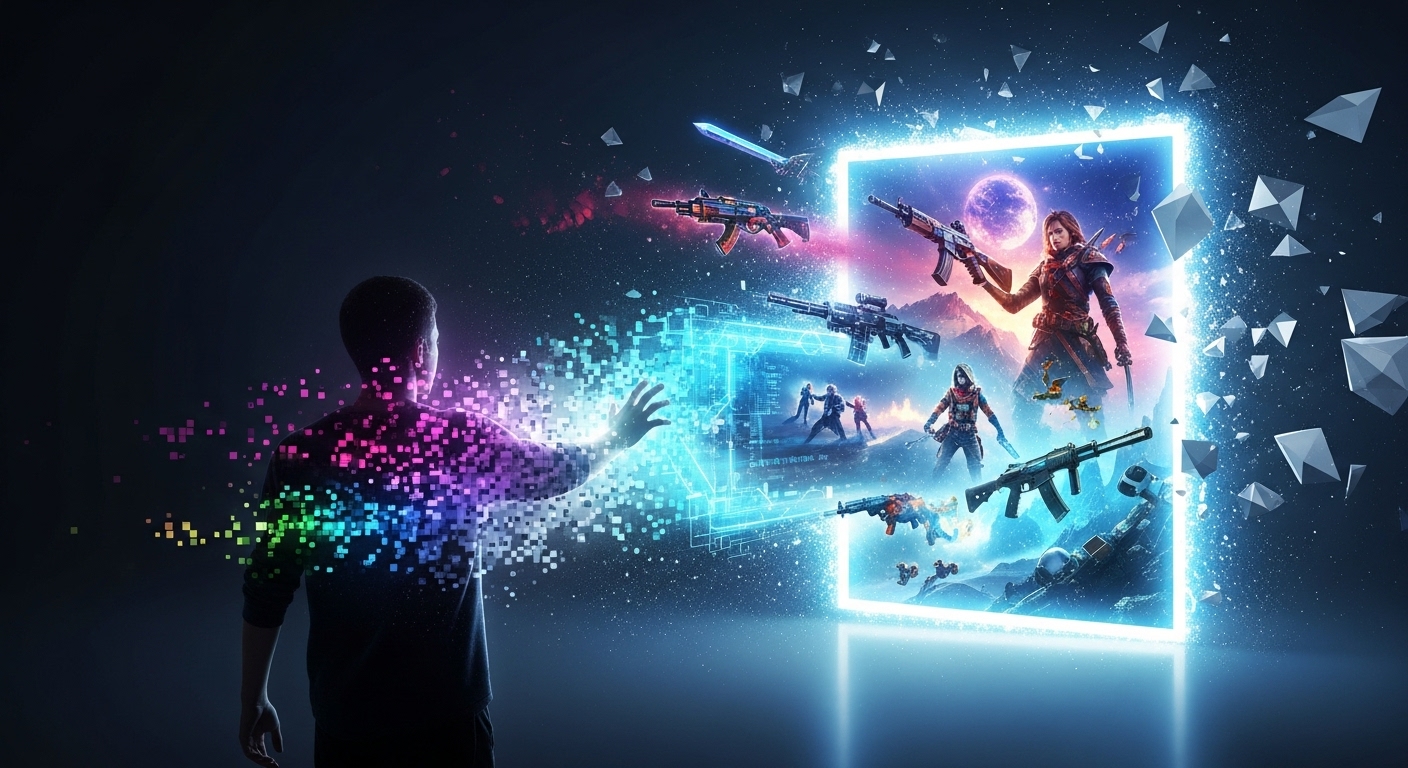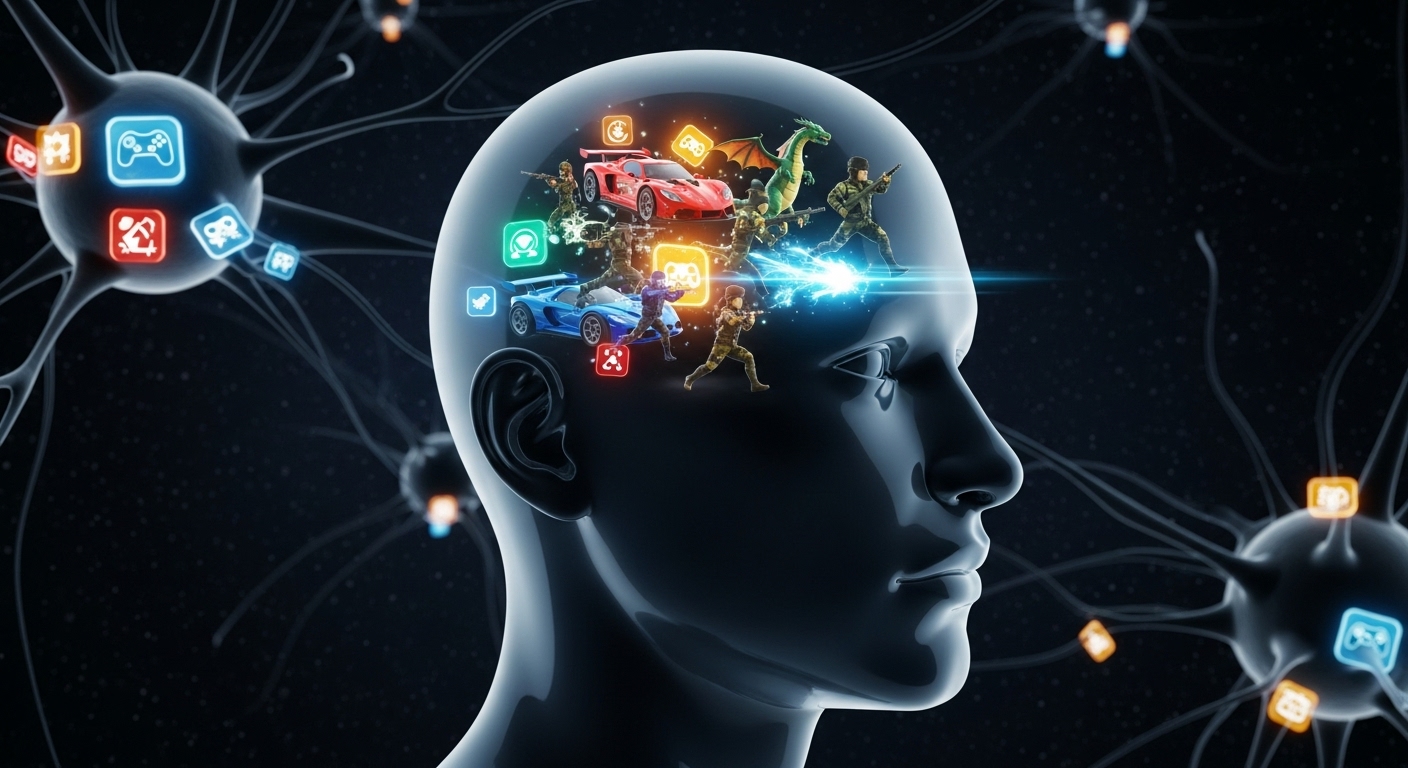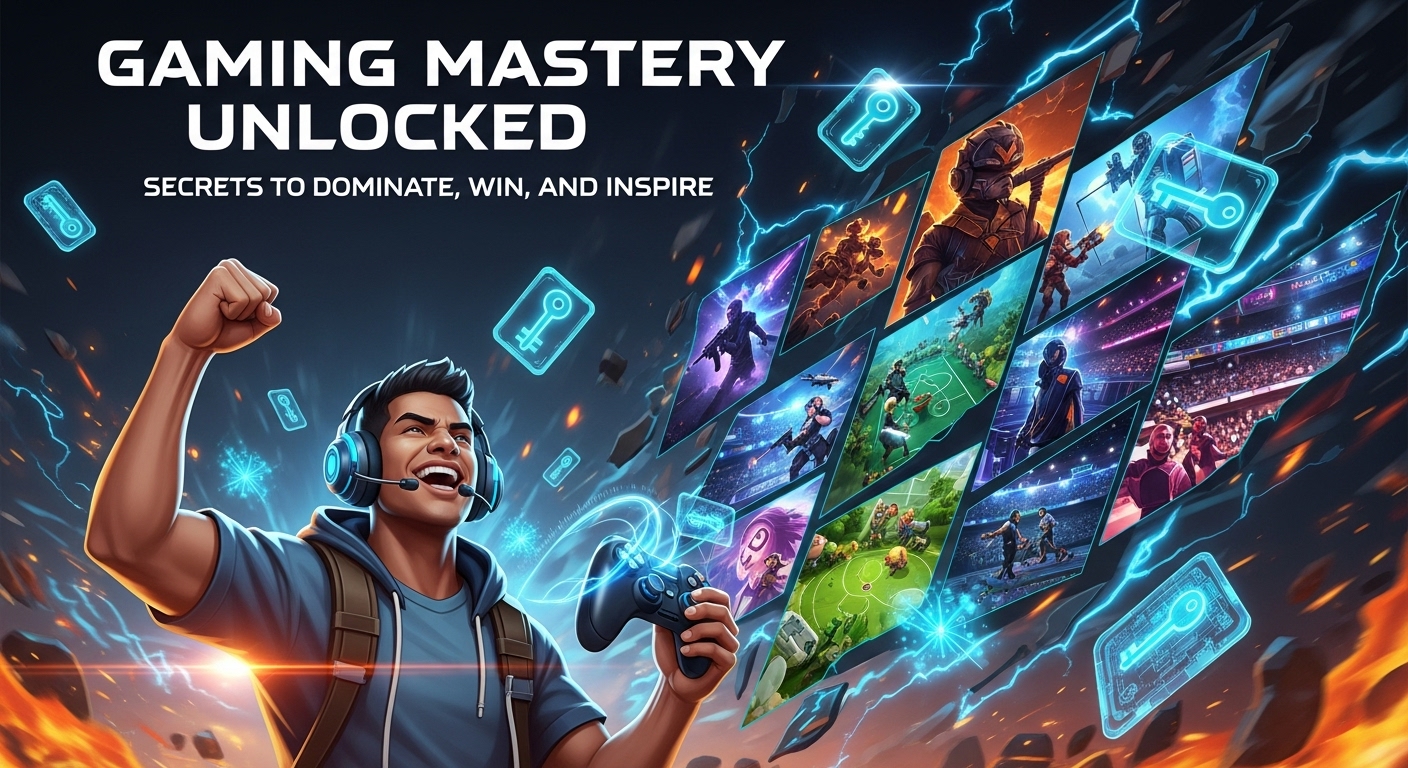Gaming has become one of the most powerful forms of entertainment, art, and technology in modern times. What once began as a simple pastime for a handful of enthusiasts has grown into a multi-billion-dollar industry that touches nearly every corner of the world. From the blinking lights of arcade machines to the hyper-realistic graphics of modern consoles, gaming’s journey is one of creativity, innovation, and community.
This blog takes you on a deep exploration of gaming — its past, present, and future — and the impact it continues to have on our society and our imagination.
The Origins of Gaming
The story of gaming begins long before consoles and computers. Humans have always played games. Ancient civilizations in Egypt, China, and Mesopotamia enjoyed board games like Senet and Go thousands of years ago. The human desire to play, compete, and challenge oneself is as old as civilization itself.
However, electronic gaming as we know it began in the mid-20th century. The first known video game, “Tennis for Two,” was created in 1958 by physicist William Higinbotham. Using an oscilloscope screen, it simulated a simple tennis match. Not long after, “Spacewar!” was developed in the 1960s by MIT students, becoming one of the earliest digital games to gain popularity among computer users.
The 1970s saw the birth of the gaming industry. “Pong,” released by Atari in 1972, became a cultural phenomenon. It was simple — two paddles and a bouncing ball — but it captured the public’s imagination and introduced the idea that video games could be commercially successful.
The Golden Age of Arcades
The late 1970s and early 1980s are often called the “Golden Age of Arcade Gaming.” During this time, gaming moved from research labs and home experiments to public entertainment spaces. Arcades filled with blinking machines became social hubs where young people gathered to compete and have fun.
Iconic titles like “Pac-Man,” “Donkey Kong,” “Space Invaders,” and “Galaga” defined this era. Each game had simple mechanics but was incredibly addictive. Players chased high scores, developing a sense of pride and community that laid the foundation for competitive gaming.
This period also gave rise to the first recognizable video game characters — heroes like Mario, born in “Donkey Kong,” and the yellow pellet-chomping Pac-Man. These characters became pop culture icons, paving the way for gaming’s eventual global dominance.
The Home Console Revolution
As technology advanced, the gaming experience shifted from public arcades to private living rooms. The late 1970s and 1980s saw the release of the first home consoles, such as the Atari 2600, which allowed players to enjoy their favorite games at home.
However, the industry faced a significant setback in 1983 with the infamous video game crash. Market oversaturation, poor-quality games, and waning consumer trust led to a massive decline in sales. Many believed gaming was just a passing fad.
Then came Nintendo.
In 1985, the Nintendo Entertainment System (NES) reignited the gaming world with hits like “Super Mario Bros.” and “The Legend of Zelda.” Nintendo focused on quality, innovation, and family-friendly fun. Its characters — Mario, Link, Samus, and others — became household names, and the company’s success redefined the industry.
By the 1990s, the competition grew fierce. Sega introduced the Genesis, boasting faster gameplay and edgier titles. The rivalry between Nintendo and Sega became legendary, symbolizing the birth of “console wars.” Players argued passionately about which system was superior, forming fan identities that continue today.
The Rise of 3D Worlds
The mid-1990s marked another technological leap: the transition from 2D to 3D graphics. The introduction of the Sony PlayStation and Nintendo 64 allowed developers to create immersive, three-dimensional worlds that players could explore freely.
“Super Mario 64,” released in 1996, was a groundbreaking achievement that showed how 3D movement and exploration could redefine gameplay. Around the same time, “Final Fantasy VII” stunned audiences with its cinematic storytelling and emotional depth, proving that games could rival movies in narrative impact.
Meanwhile, PC gaming was also thriving. Titles like “Doom,” “Quake,” and “StarCraft” introduced online multiplayer experiences and competitive gameplay that shaped the early foundations of esports. The PC became a haven for innovation, with developers experimenting in genres from real-time strategy to first-person shooters.
The Online Gaming Revolution
The late 1990s and early 2000s saw the internet revolutionize how people interacted with games. For the first time, players could connect with others around the world. Games like “EverQuest,” “Runescape,” and “World of Warcraft” introduced massive online worlds where millions could cooperate, compete, and socialize.
Online gaming transformed gaming from a solitary hobby into a global community. The concept of multiplayer cooperation gave rise to clans, guilds, and in-game economies. Virtual friendships — and rivalries — became a defining part of the gaming experience.
Consoles also adapted to the online world. Xbox Live, launched in 2002, revolutionized console gaming by allowing players to communicate through voice chat, download new content, and compete online. Sony followed with the PlayStation Network, and suddenly, gaming became more connected than ever before.
The Birth of Esports
Competitive gaming has always existed, but in the 2000s, it evolved into a structured global phenomenon known as esports. What began as small tournaments in arcades and college campuses transformed into massive events filling stadiums and arenas.
Games like “Counter-Strike,” “StarCraft,” and “League of Legends” became cornerstones of professional competition. Teams formed, sponsors invested, and prize pools reached millions of dollars. Players who once competed for fun were now celebrities with fan followings and lucrative careers.
Streaming platforms like Twitch allowed anyone to watch live matches or share their gameplay, turning gaming into a form of interactive entertainment. Viewers didn’t just play games; they watched others play, learned strategies, and became part of the community.
Today, esports rivals traditional sports in viewership and influence. Major tournaments are broadcast globally, and professional players are as recognizable as athletes or entertainers.
The Evolution of Storytelling in Games
While competition and gameplay mechanics are crucial, storytelling has become one of gaming’s most powerful elements. Modern games aren’t just about winning — they’re about experiencing narratives that evoke emotion, provoke thought, and connect players to fictional worlds.
Titles like “The Last of Us,” “Red Dead Redemption 2,” and “God of War” showcase deep, cinematic storytelling that blurs the line between film and interactive art. Players don’t just watch characters struggle; they live those struggles, making choices that affect the story’s outcome.
Indie developers have also pushed storytelling boundaries. Games such as “Undertale,” “Journey,” and “Celeste” use minimalist design and emotional themes to explore topics like identity, grief, and perseverance. These games prove that emotional impact doesn’t require blockbuster budgets — just creativity and heart.
The Power of Community
Gaming is no longer an isolated experience. Communities thrive online, connecting players across continents. Whether it’s a casual player sharing screenshots or a dedicated fan creating game mods, community participation is at the heart of gaming culture.
Forums, fan art, memes, and YouTube walkthroughs have built an ecosystem where players not only consume games but also contribute to them. Modding — the act of altering or creating new game content — has kept older titles alive for decades. Games like “Skyrim” and “Minecraft” remain relevant largely because of their passionate fan communities.
Gaming conventions such as E3, Gamescom, and PAX have become global celebrations of creativity, where developers and fans meet to share their love for the medium. These events showcase how gaming has evolved from niche entertainment to a cornerstone of modern culture.
The Technological Leap to Realism
Technology continues to push gaming into new frontiers. Graphics have reached near-photorealistic levels, powered by advanced rendering engines and powerful hardware. Ray tracing simulates real-world lighting, while high-refresh-rate displays create smoother and more responsive gameplay.
Virtual reality (VR) and augmented reality (AR) have opened new dimensions of interaction. VR headsets allow players to step inside their games, experiencing worlds as if they were physically there. AR, on the other hand, blends the digital and physical worlds — as seen in global sensations like “Pokémon GO.”
Artificial intelligence also plays a growing role. Modern games feature intelligent NPCs (non-player characters) that react dynamically to player actions, making worlds feel alive and unpredictable. AI-driven storytelling promises a future where no two players experience the same narrative.
Mobile Gaming and Accessibility
While consoles and PCs dominate headlines, mobile gaming has quietly become the most popular form of gaming worldwide. The smartphone revolution made gaming accessible to billions of people. Titles like “Candy Crush,” “Clash of Clans,” and “PUBG Mobile” have proven that gaming can thrive on smaller screens.
Mobile games are often free to play, supported by in-app purchases and ads. This model has changed how games are monetized, for better or worse. On one hand, it democratizes gaming, allowing anyone to play without upfront costs. On the other, it raises concerns about predatory microtransactions and player spending habits.
Still, mobile gaming’s accessibility cannot be overstated. It has introduced gaming to new audiences — from children to seniors — and continues to expand the global gaming community.
Gaming as an Art Form
For decades, skeptics dismissed video games as mere distractions. Today, that perception has changed dramatically. Games are now recognized as legitimate forms of art, capable of expressing complex ideas, emotions, and aesthetics.
Game design combines visual art, music, storytelling, and interactivity into a single medium. Titles like “Shadow of the Colossus,” “Gris,” and “Journey” are celebrated not just for their gameplay but for their artistic vision and emotional resonance. Museums and universities now study video games as cultural artifacts, examining their influence on modern society.
The Social Impact of Gaming
Beyond entertainment, gaming has a profound impact on society. It fosters problem-solving, teamwork, and creativity. Multiplayer games encourage communication and collaboration, while single-player adventures challenge players to think critically and empathize with characters.
Moreover, gaming has become a tool for education, therapy, and social awareness. Serious games are used to teach history, science, and language. Virtual reality is being applied in medical training and psychological therapy, helping people overcome fears or practice complex procedures.
However, gaming’s social impact isn’t without controversy. Issues like addiction, toxic behavior, and representation continue to spark debate. The industry faces challenges in promoting diversity, mental well-being, and responsible design. But it’s evolving — developers and players alike are pushing for more inclusive and ethical practices.
The Future of Gaming
The future of gaming looks boundless. Cloud gaming promises to eliminate hardware barriers, allowing players to stream high-quality games from any device. The metaverse concept — a shared, persistent virtual space — hints at worlds where gaming, work, and social interaction merge seamlessly.
Artificial intelligence will continue to reshape how games are created and played. Procedural generation and adaptive storytelling could allow games to evolve dynamically, creating infinite worlds and unique experiences for every player.
At the same time, gaming’s global reach will deepen. With expanding internet access and technological affordability, millions of new players will join the digital playground. The lines between gamer, creator, and spectator will blur, making gaming not just an activity but a way of life.
Conclusion: More Than Just a Game
Gaming has come a long way from the pixelated screens of the past. It has evolved into a cultural force that transcends age, geography, and language. It’s a medium that entertains, inspires, educates, and connects people in ways no other art form can.
From the thrill of competition to the depth of storytelling, gaming reflects the best of human creativity and imagination. It challenges us to think, adapt, and dream beyond limits. Whether you’re exploring distant galaxies, solving mysteries, or simply building in a sandbox world, gaming offers a space where everyone can be a creator and adventurer.
The world of gaming is not just about winning or losing — it’s about experiencing stories, emotions, and connections that remind us of what it means to play. And as technology continues to evolve, one truth remains constant: gaming will always be a reflection of humanity’s boundless curiosity and desire to create worlds beyond our own.



